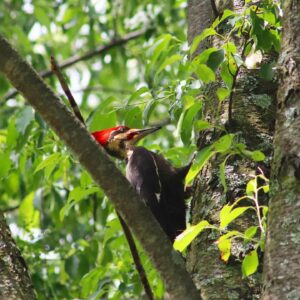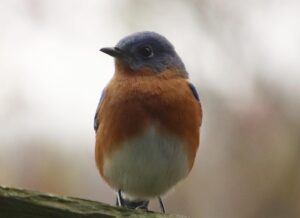
It’s a unusual treat to see a live owl in the woods. They blend in with their surroundings so well, they are hard to see, and they like it that way. It’s an extra special treat to see a white owl, since they are rare. However, what white owl is it? With the popularity of the Harry Potter movies, and his white owl Hedwig, people often assume that all white owls are Snowy Owls. In Kentucky, you are more likely to find a Barn Owl, which lives here all year.
Ghostly pale and strictly nocturnal, Barn Owls are silent predators of the night world. Lanky, with a whitish face, chest, and belly, and buffy upperparts, this owl roosts in hidden, quiet places during the day. By night, they hunt on buoyant wingbeats in open fields and meadows. You can find them by listening for their eerie, raspy calls, quite unlike the hoots of other owls. Despite a worldwide distribution, Barn Owls are declining in parts of their range due to habitat loss, and are considered a bird of special concern in Kentucky. They are 12-15 inches tall, weighing only 1 – 1.5 pounds. The Barn Owl has excellent low-light vision, and can easily find prey at night by sight. But its ability to locate prey by sound alone is the best of any animal that has ever been tested. It can catch mice in complete darkness in the lab, or hidden by vegetation or snow out in the real world.

Snowy Owls are very large owls with smoothly rounded heads and no ear tufts. The body is bulky, with dense feathering on the legs that makes the bird look wide at the base when sitting on the ground. In winter, look for Snowy Owls along shorelines of lakes and the ocean, as well as on agricultural fields and airport lands. Snowy Owls breed in the treeless arctic tundra. Although the darkest males and the palest females are nearly alike in color, the whitest birds—including the ones that played Harry Potter’s Hedwig—are always males and the most heavily barred ones are always females. A large female may be almost 2 feet tall and weigh up to 6.25 pounds, so they are the largest owl in North America (weight-wise).
Whether the tundra or the Great Plains, an airport field or beach dunes, Snowy Owls like treeless places and wide-open spaces. Because they often sit right on the ground to hunt, they prefer rolling terrain where they can find a vantage to survey the surrounding area. On their wintering grounds they’ll also perch atop a fencepost, hay bale, building, telephone pole, grain elevator—anywhere with a good view. A Snowy Owl was confirmed at the Louisville Airport in November, 2012, and birders have made sporadic reports of another this year.
Winter numbers of Snowy Owls in the U.S. peak periodically, which may be attributed to lemming cycles farther north. If there aren’t enough lemmings and other prey, Snowy Owls will migrate away from their Arctic territory in unusual numbers, which is called in irruption. During irruptive years, Snowy Owls can flush south throughout the lower 48 states, as far as south as Texas and Florida in extreme years. The winter of 2013-2014 is proving to be one of the biggest Snowy Owl irruptions in years, even though owls just started arriving in the Mid-Atlantic region during the last two weeks. You can go to Nemesis Bird to keep up with the sightings across the U.S. Should you have the great good fortune of finding a Snowy Owl, please read the excellent cautions by Sam Galick against disturbing or stressing these beautiful owls. They have traveled a great distance and many of the more accessible and approachable birds are also likely stressed for food. Please keep a respectful distance.



